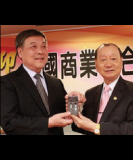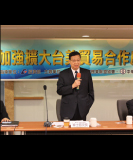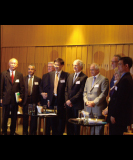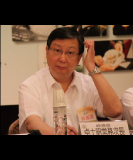You are browsing > Service in Taiwan > Development
Trump Administration Sends Annual Trade Agenda Report to CongressUSTR
Washington, DC – U.S. Trade Representative Robert Lighthizer delivered President Trump’s Trade Policy Agenda and Annual Report to Congress today, outlining how the Administration is promoting free, fair and reciprocal trade and strongly enforcing U.S. trade laws.
“President Trump is keeping his promises to the American people on trade, from withdrawing the United States from the flawed Trans-Pacific Partnership, to renegotiating NAFTA, to strongly enforcing U.S. trade laws,” said Ambassador Robert Lighthizer. “We are already seeing the results of President Trump’s agenda pay off for American workers, farmers, ranchers, and businesses.”
The President’s Trade Policy Agenda rests on five major pillars:
Trade Policy that Supports National Security Policy
Consistent with the National Security Strategy President Trump announced in December 2017, the President’s Trade Policy Agenda recognizes that economic prosperity at home is necessary for American power and influence abroad. Free, fair and reciprocal trade relations are a key component of the President’s strategy to promote American prosperity. Therefore, the Trump Administration will work aggressively to address trade imbalances, promote fair and reciprocal trade relationships, enforce U.S. rights under existing trade agreements, and work with like-minded countries to defend our common prosperity and security against economic aggression.
“Countries that are committed to market-based outcomes and that are willing to provide the United States with reciprocal opportunities in their home markets will find a true friend and ally in the Trump Administration,” the President’s Trade Policy Agenda states. “Countries that refuse to give us reciprocal treatment or who engage in other unfair trading practices will find that we know how to defend our interests.”
Strengthening the American Economy
The President’s Trade Agenda will build on the economic momentum provided by the Tax Cuts and Jobs Act and the Administration’s efforts to reduce regulatory burdens. The Council of Economic Advisers reported in February that the U.S. economy experienced strong and significant acceleration during President Trump’s first year in office. Growth in real GDP exceeded expectations, the unemployment rate fell to its lowest level in 17 years, and the economy added 2.2 million jobs. The Trump Administration’s focus on fair and reciprocal trade, combined with the President’s tax cuts and regulatory relief, will lead to more efficient markets and make it easier for American workers and companies to succeed.
Negotiating Trade Deals that Work for All Americans
The Trump Administration will seek an extension of Trade Promotion Authority until 2021 and aggressively use that authority to negotiate or revise trade agreements so they are fair, balanced and support American prosperity. However, the President’s Trade Policy Agenda warns that the U.S. Senate’s failure to confirm President Trump’s nominees to serve as Deputy U.S. Trade Representatives and Chief Agricultural Negotiator “could significantly undermine” efforts to move forward with trade negotiations.
As part of its trade agenda for 2018, the Trump Administration will continue renegotiating the North American Free Trade Agreement (NAFTA) to modernize and rebalance the 24-year-old trade pact, as well as negotiations to amend the Korea-U.S. Free Trade Agreement (KORUS) in order to seek fairer, more reciprocal trade.
The Trump Administration intends to reach other agreements designed to promote fair, balanced trade and support American prosperity.
As part of this effort, the United States and the United Kingdom established a Trade and Investment Working Group in July 2017 to lay the groundwork for commercial continuity and prepare for a potential future trade agreement once the UK leaves the European Union. The Administration will continue preparing for other potential bilateral agreements, including in the Indo-Pacific and African regions.
Enforcing and Defending U.S. Trade Laws
The Trump Administration will continue to use all tools available under U.S. law to combat unfair trade.
In January 2018, President Trump exercised his authority under Section 201 of the Trade Act of 1974 to provide safeguard relief to U.S. manufacturers injured by imports of washing machines and solar panels. This was the first time Section 201 had been used to impose tariffs in 16 years.
The Trump Administration in 2017 launched a self-initiated Section 301 investigation with an in-depth probe into Chinese practices related to forced technology transfer, unfair licensing, and intellectual property (IP) policies and practices. The Trump Administration has successfully litigated a number of World Trade Organization (WTO) disputes, helping force countries to abandon unfair practices and preserving the U.S. right to enact fair laws.
Strengthening the Multilateral Trading System
The Administration will work with all WTO members who share the U.S. goal of using the organization to create rules that will lead to more efficient markets, more trade and greater wealth for our citizens. However, the United States is also concerned that the WTO is not operating as the contracting parties envisioned and, as a result, is undermining America’s ability to act in its national interest. The Trump Administration will work with other like-minded countries to address these long-standing concerns.
Background:
Congress requires the U.S. Trade Representative to submit the President’s Trade Policy Agenda and Annual Report by March 1 each year. The Trade Policy Agenda and Annual Report were prepared according to guidelines established under the Trade Act of 1974, as amended.
The full report can be viewed here.
A fact sheet on the report can be viewed here.









